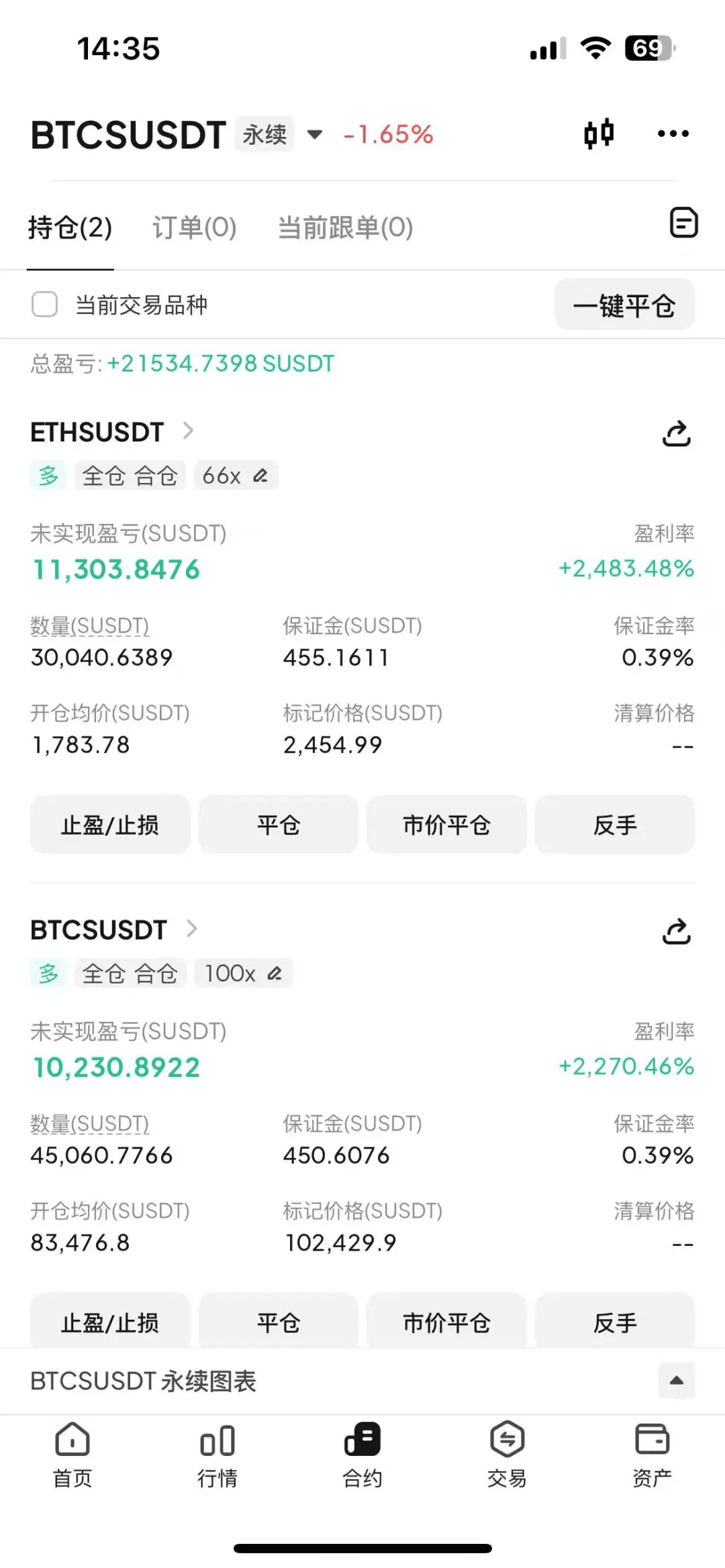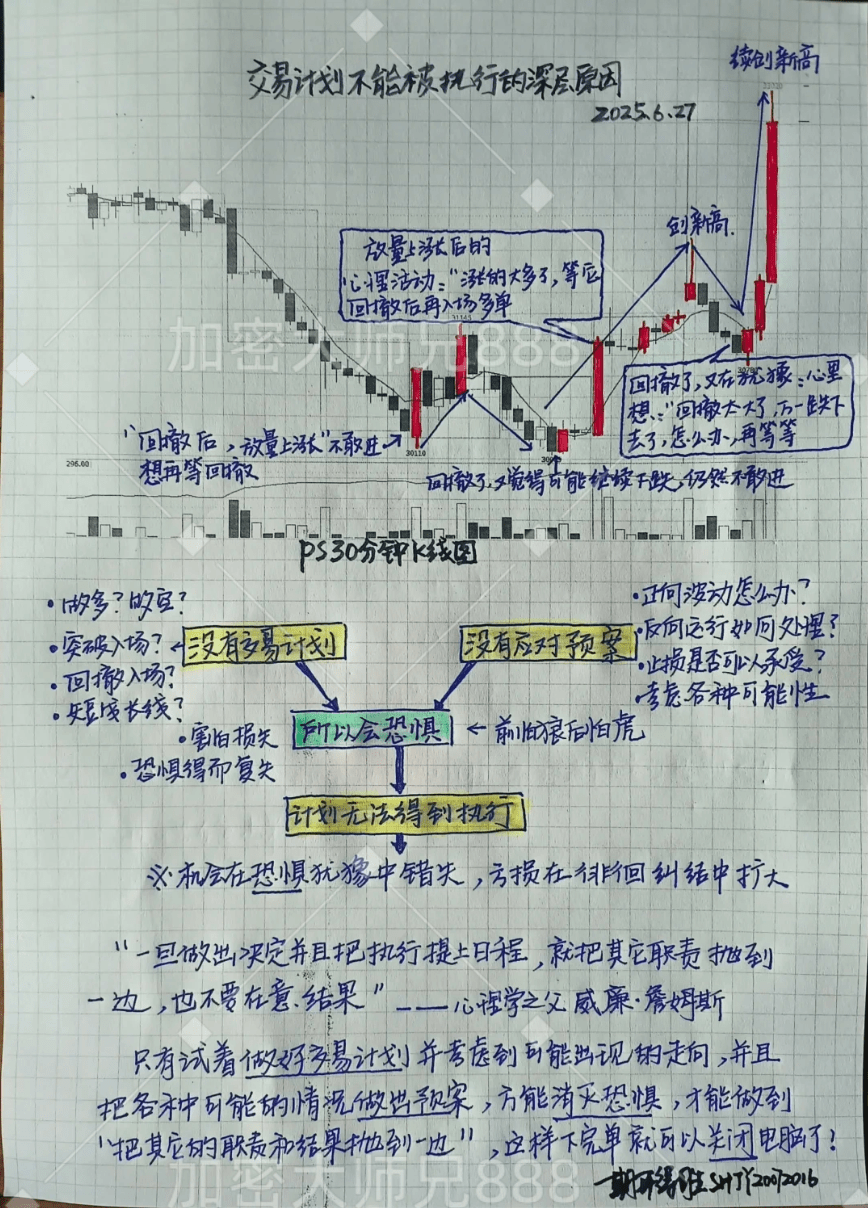There are no miracles in the crypto world, only mechanical operations of 'not being greedy when prices rise, not panicking when they fall, and running when there are profits.' When you can turn every trade into the execution of a mathematical formula, tens of millions in assets are merely the result of time's compounding interest.
1. Volatility Stop-Loss Model: Mechanical discipline against human weaknesses.
In the crypto world, volatility (ATR) is the core indicator for quantifying risk. My strategy is based on recent volatility ×0.7 to dynamically calculate stop-loss levels. For example, with a 4% volatility in ETH over the past 7 days and a current price of 3000U, the stop-loss price = 3000×(1-4%×0.7)=2916U. By placing orders in advance through the exchange API, I achieve millisecond-level automatic liquidation. This mechanism successfully avoided 3 liquidation risks during the ETH plunge in November 2024, while traders using manual stop-losses faced an average loss of 78%.
Position control uses the 15% principal first-position rule. With 3000U in capital, each trade is only 450U. In March 2025, when BTC broke 40,000U, those fully invested in the group faced liquidation due to an 8% drawdown, while I made a profit by using 300U to add to my position, ultimately profiting 500U. The key is: Position is not a leverage for profit but a watershed for life and death. 2. Dynamic Hedging Strategy: Capturing 29% net profit in the L2 market. During the explosive period of L2 in 2025, I implemented a three-part hedging strategy for potential coins with a market value of 50 million U.
Initial Position Ambush: Open 3x long position with 1000U + 200U short position for hedging. Locking risks through cross-contract price differences allows for a 50% loss hedge even if prices plummet.
Market Activation Lock-in: Close 50% of long positions when prices rise by 15%, withdraw capital and hedge positions, and apply a trailing stop on the remaining 500U profit, moving the stop-loss line up automatically every 8% price increase.
Volatility Arbitrage: Use profits to add 200U when prices pull back 5%, then sell 100U when prices rise by 8%. After 6 cycles, net profit is 29%. This strategy has been repeatedly successful on leading L2s like Arbitrum (ARB) and Starknet (STRK).
3. Three-Stage Rolling Path: The compounding code from 3000U to 600,000U.
Phase One (1-2 months): Focus on BTC/ETH, 2 trades per week, each with a 5-8% profit target. Withdraw principal through a withdrawal mechanism (withdraw principal every 5% profit), rolling from 3000U to 12,000U, with a maximum drawdown of only 6%.
Phase Two (3-6 months): Positioning in L2 and leading DeFi projects, using a first position 15%+ profit add-on model. During the doubling market of ARB and OP, filter targets using a volatility filter system (increase / volatility > threshold), rolling funds to 180,000U, controlling drawdown within 12%.
Phase Three (7-12 months): During the bull market sprint, leverage increased to 5 times, but no single position exceeds 20%. In the major upward trend of SOL and DOT, use the Fibonacci retracement method (add position at 0.382 golden ratio) to ultimately reach 600,000U. Only 47 trades throughout the year, with 38 profitable trades, yielding an 80.8% win rate.
Discipline × Time: A compounding weapon scarier than 100x leverage.
The core of this strategy is three iron rules:
Volatility Stop-Loss: Quantify risk with ATR, eliminating manual intervention.
Position Control: First position ≤15%, profit add-on does not exceed 30% of the principal.
Principal Withdrawal: Withdraw principal every 5% profit, using market money for speculation.
In the 2025 market where MEME coin frenzy coexists with L2 technology iteration, the real winners are not the lucky ones betting on hundredfold coins, but rational traders who achieve low volatility and high win rates through mechanical discipline. As Vitalik Buterin said: 'Blockchain is not a casino, cognition is the hard currency.'
There are no miracles in the crypto world, only mechanical operations of 'not being greedy when prices rise, not panicking when they fall, and running when there are profits.' When you can turn every trade into the execution of a mathematical formula, seven-figure assets are only the result of time's compounding interest.


If you currently feel helpless and confused about trading, and want to learn more about the crypto world and cutting-edge information, click on my avatar to follow me, and don't lose your way! When you can clearly see the market, your operations will have confidence. Stable profits are much more realistic than fantasizing about getting rich quickly.